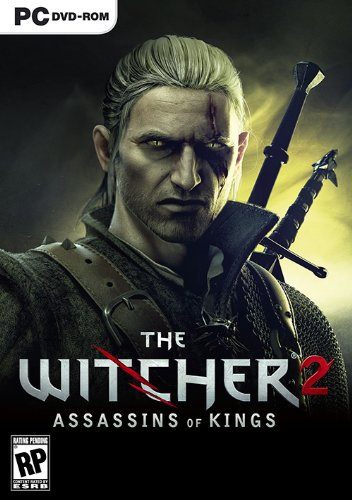The Witcher 2: Assassins of Kings Review
Article Index
Page 1 of 6
The Witcher 2: Assassins of Kings is CD Projekt RED's sequel to The Witcher, GameBanshee's 2007 "RPG of the Year", both games based on Andrzej Sapkowski's fantasy novels. Their first title was generally well-received even more so following the Enhanced Edition patch release and was certainly a treat for PC RPG gamers. As such, CD Projekt RED mostly opted not to mess with a winning formula in the sequel, the core strength of the game being a choice-and-consequence-heavy story set in a realistic and grim fantasy world. It does make some major and minor changes, the most easily noticeable being a revamped combat system and much more restrictive camera. And where The Witcher ran on an aging Aurora engine, The Witcher 2 runs on the studio's own engine, titled the RED Engine. It's close to many of The Witcher's core design tenets, but expands and changes a lot as well. Therefore, I'll be digging deep in this review in order to discuss these different points effectively.
Graphics and Engine
Like its predecessor, The Witcher 2 is a great-looking game, probably the best-looking RPG I've played from an engine capacity standpoint. The change from Aurora to the RED Engine is noticeable not just in how good buildings and characters look, but also in the additional flexibility given to map design - The Witcher 2 offers us large and multi-leveled maps, where you can move or climb up and down. It doesn't seem like a major advancement, but it's a bit of a relief after The Witcher's tendency towards flat maps and cutting you off with knee-high fences.
The Witcher's total game world isn't huge in square mileage, as CD Projekt RED instead spent their energy on crafting a very detailed world. As a compulsive hoarder, I spent a lot of time going in and out of random homes in the different towns, and even with homes that serve no real purpose quest-wise, every single one has a unique layout. NPCs are similarly unique, with many of Temeria's bustling citizens having their own name, personality, and daily routines.
Like much of the game's setting, the graphic design is all about the bleak realism of this game's medieval fantasy setting. This design can be seen in the equipment and weaponry, which are all directly believable. Similarly, many of the monsters are close to the standards for dark high fantasy, like the drowned undead, harpies, wraiths, and even a dragon. There's a healthy variety of monsters and the design of each of them fits into the believable and dark theme, excepting possibly the odd-looking arachas.
Each act brings you to a different area of the world, and once you press on in the game, there's no returning to previous locations. Many monsters are tied to specific acts, and similarly the area design changes from act to act. The prologue and first act, set in a castle and riverside town, possess a kind of standard high fantasy design. It's in the remaining two acts where CD Projekt gets more creative, when Geralt is traveling through the dwarven town of Vergen, a well-stocked Kaedweni camp, and the old semi-ruins of Loc Muinne. These areas fully utilize the engine to be spread over multiple levels and have more unique feels to them, Vergen in particular feeling like it was carved out of the mountainside.
As mentioned, the maps are fairly large and continuous, but each act is still cut into several smaller maps for loading purposes. Usually the game sends you through (a set of) doors while it quickly loads the area, and it tends to work really well, as the loading times are hardly noticeable. That said, there are a few technical niggles, not the least of which was a fairly disastrous launch, with preorder DLC not being available and the DRM activation preventing some people from even playing the game for days. But CD Projekt jumped right on it, patching the game to remove the DRM and giving everyone all of the pre-order DLC; a brute-force but effective solution. That said, as of the writing of this article the game still has some issues, including a tendency on my computer to hard crash infrequently and stutter during the animated cutscenes. Furthermore, it only supports 16:9 screen resolutions, which is a very curious design decision and leads me to wonder about how the future Xbox 360 version might have affected such a decision. And finally, in another puzzler, they once again messed up the save system. The Witcher made a new save file for every quicksave, meaning they piled up at a high rate. The Witcher 2 doesn't do that, instead creating a new save file for every one of the frequent autosaves. Halfway during my second playthrough it would take up to 30 seconds before the loading screen popped up, and when going in to manually remove some saves, I discovered the game had stored a ridiculous 2 GB of savegame files. Save files have since been patched to take up less space, but the sheer amount is still a problem.


